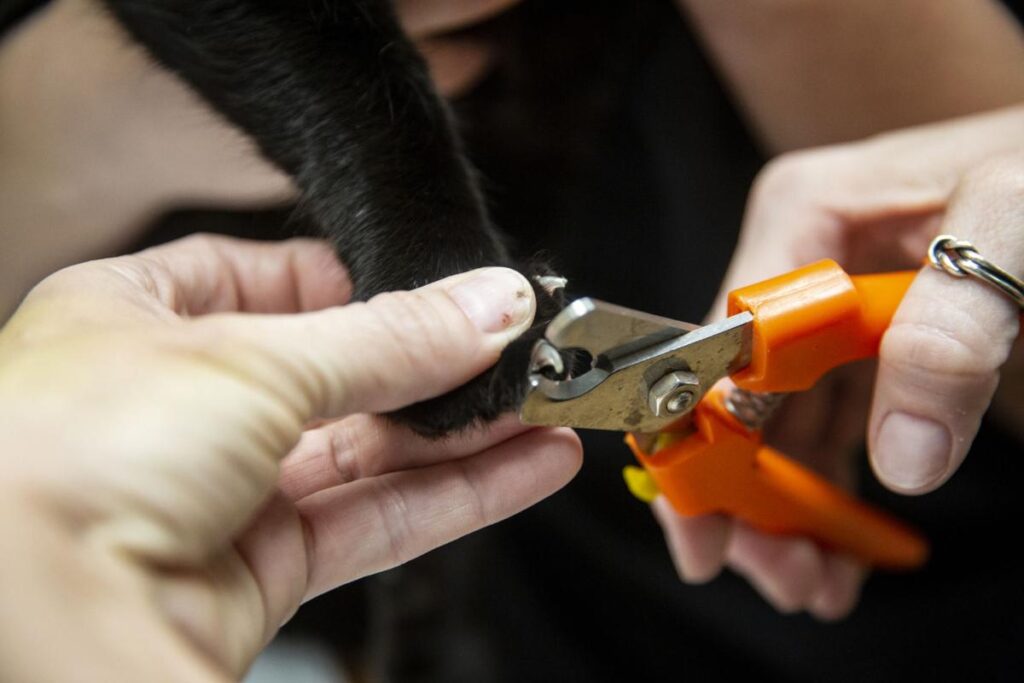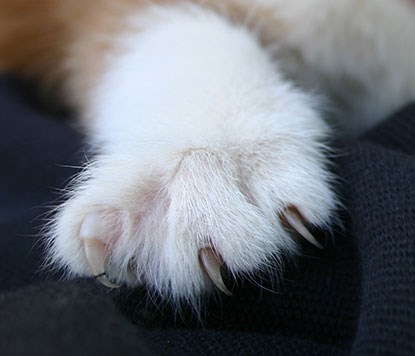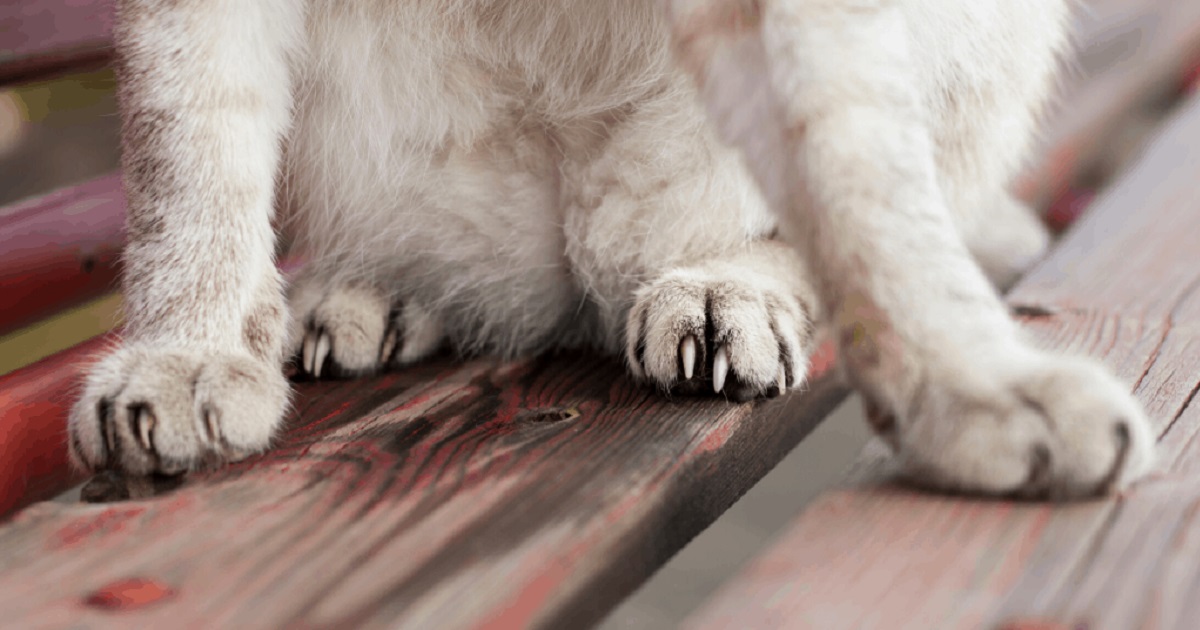Anyone who has spent some time around cats knows about their sharp claws.
However, the claws on their front limbs are almost always hidden.
But upon sensing danger, or when hunting prey, the cat’s claws will be exposed in readiness for the fight.
By retracting their claws, the cats will move stealthily which is one of their techniques for hunting.
But once they have crept up on the prey and are ready to pounce, they flex their paw tendon which unleashes the claws.
Because cats do not use their back claws for protection or hunting, they do not naturally retract them.
Retraction of the front claws helps to protect them and keep them sharp.
But the back claws are used for traction when walking and climbing and this is why cats rarely retract them.
Also, you don’t have to worry about your cat hurting you with his back claws for two reasons:
First, they are more adapted to using the front claws to attack so there is little chance they will harm you with the back ones.
Secondly, these claws are not sharp because they wear out from the constant walking, scratching, and climbing.
Related Post: 18 Cat Claws Anatomy Facts for Beginners
How to Teach Your Cat to Retract Their Claws

Kittens typically learn to retract their claws at 4 weeks old. This is part of their natural development.
But there is always that exceptional kitten that skips this important step.
Others may learn to retract their claws but still keep unleashing them when you are playing with them which can be dangerous.
Also, we have established that cats will not naturally retract their back claws.
If your kitten falls in the above categories, she can start clawing on your furniture and other objects in the house.
Luckily, all is not lost because you can easily train your kitty to retract its claws.
To train your cat to retract their claws, start playing with them and watch for the moment they unsheathe their claws.
When this happens, make a yelping sound in a high pitch. The idea is to mimic the sound that is made with another cat and this will send the signal that the unsheathed claws are dangerous.
After a while, the cat will get the message and keep its claws retracted.
However, this will not work if the unsheathing was happening involuntarily due to infection, disease, or injury. In such a case, you may need to consult a vet.
What to Do If Your Kitty Refuses To Retract Its Claws

If you try to train your cat but he still refuses to retract his claws, and if you have ruled out the possibility of an injury or sickness, then you might have to take drastic measures – like declawing your cat.
Declawing cats is not recommended because the cat relies on claws for climbing, walking, and protection.
If your cat is attacked by a raccoon or some other wild animal, he will be defenseless without his claws and that can result in serious injury or even death.
So, if you must declaw your cat, you have to take other precautionary measures to keep your kitty safe—like keeping him indoors whenever you are not there to watch him.
Most vets will also advise you against declawing your cat.
A better workaround is getting claw tips for your cat. Claw tips are plastic caps that go on your cat’s claws.
They have blunt edges, so even if your cat unsheathes the claws, they will not be dangerous to you or your family.
Also, the blunt edges will mean they cannot leave scratch marks on your furniture and floor.
Additionally, the claw tips might just inspire the kitty to start retracting their claws.
Related Post: States Where Declawing Is Illegal
Reasons why a cat may be unable to retract their claws

Cats learn to retract their claws naturally by the time they are 4 weeks old.
However, some situations might make claw retraction hard for them.
Here are some possible reasons why a cat would struggle with retracting its claws.
1. Injury
Cats can sustain injuries as they run and climb. If you notice your cat limping, there is a good chance they have hurt their tendon or plantaris, which means they will have a hard time retracting their claws.
Related Posts:
2. Old age
Old age comes with lots of complications including arthritis, stiffening of muscles, and loss of flexibility.
All these factors can result in the loss of the ability to retract claws.
Arthritis and stiffened muscles can cause pain whenever the cat attempts to retract their claws which will make them stop trying.
3. Infection
Fungal or bacterial infections can also make it hard for your cat to retract their claws.
Such infections are typically caused by an injury from a fall or a biting.
Examples of injuries that can result in loss of claw retraction prowess are paraonychia and onychomycosis.
Closing Thoughts
To sum it up, your cat will naturally retract the front claws when in the house and when playing with you and then unsheathe them when hunting or protecting themselves.
However, the back claws are almost always unsheathed because the cat relies on them for traction when walking, running, and climbing.
Because they are overused, the back claws are not very sharp and it’s not risky for you.
As tempting as it might be, do not declaw your cat. You would rather train him to retract the claws or get them plastic claw tips which usually have blunt edges.

Hi! I am Eleanor Price. I started this website after my cat, Louie, almost died from a case of botulism (a type of food poisoning often caused by bacteria that grow on food items). Turned out that my cat’s diet was the problem. I have made it my duty to provide the best information and recommendations about everything cat lovers need to know about their felines’ health and wellbeing. My goal is to find the most informative content on anything feline-related and share it with fellow hardworking kitty lovers.

